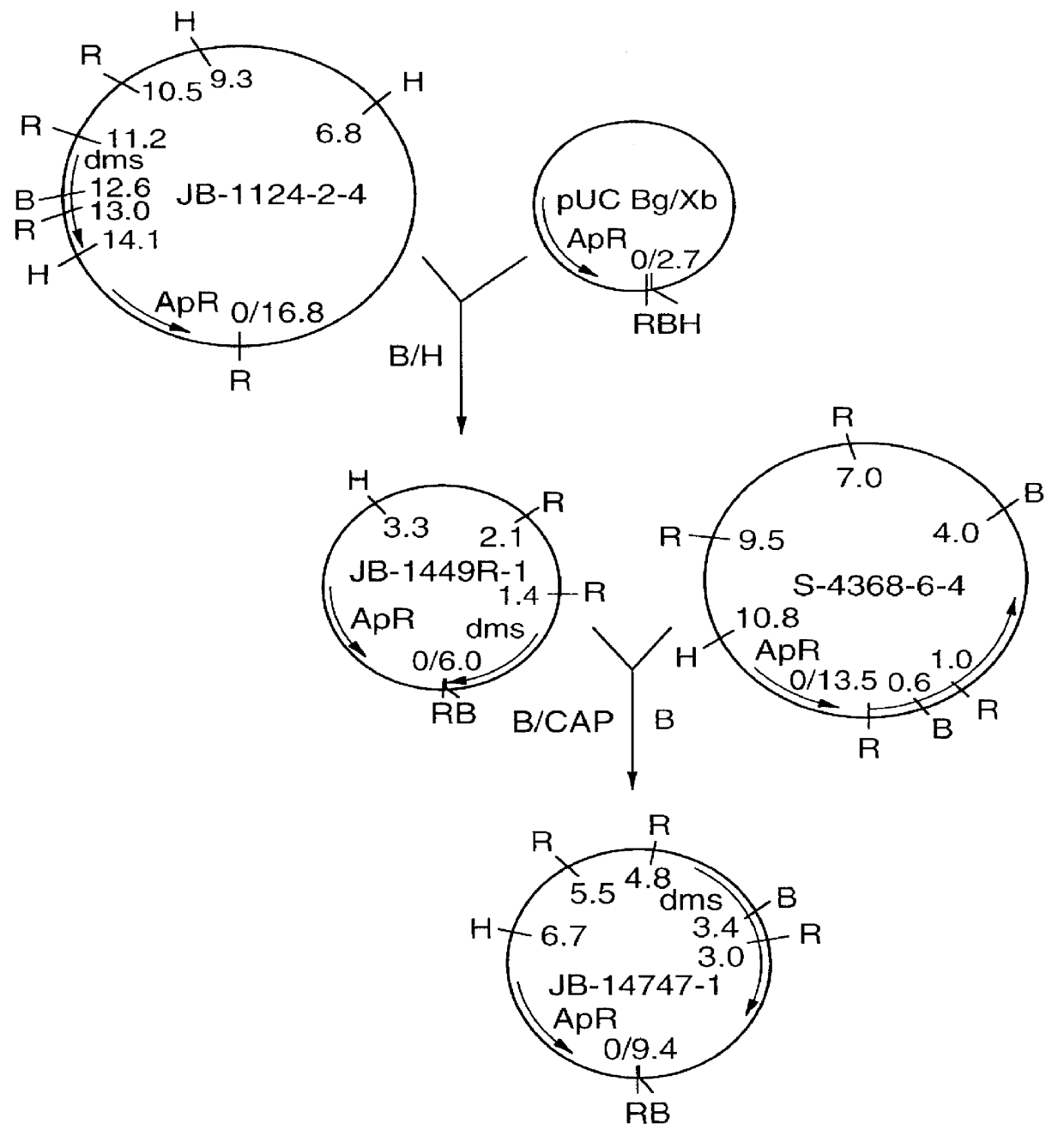Haemophilus influenzae dimethylsulphoxide reductase enzyme
- Summary
- Abstract
- Description
- Claims
- Application Information
AI Technical Summary
Benefits of technology
Problems solved by technology
Method used
Image
Examples
example 1
This Example illustrates the preparation of chromosomal DNA from H. influenzae strains.
H. influenzae strains were grown on Mueller-Hinton agar or in brain heart infusion broth as described by Harkness et al (Ref. 10).
Cells were pelleted from 50 ml of culture by centrifugation at 5000 rpm for 15-20 minutes, at 4.degree. C. The cell pellet was resuspended in 10 ml of TE (10 mM Tris-HCl, 1 mM EDTA, pH 7.5), pronase and SDS were added to final concentrations of 500 .mu.g / ml and 1%, respectively. The sample was incubated at 37.degree. C. for 4 hours until a clear lysate was obtained. The lysate was extracted once with Tris-saturated phenol, once with Tris-saturated phenol / chloroform (1:1), and once with chloroform. The final aqueous phase was dialysed for 24 hours against 2.times.500 ml of 1M NaCl at 4.degree. C., changing the buffer once, and for 24 hours against 2.times.500 ml of TE at 4.degree. C., changing the buffer once. The final dialysate was aliquotted for use.
example 2
This Example illustrates the construction of an expression library from H. influenzae type b strain Eagan chromosomal DNA.
Chromosomal DNA was digested with restriction enzymes BamH I and EcoR I, and fragments of 2 to 6 kb in size were purified by gel electrophoresis. Plasmids pEV vrf1, pEV vrf2, and pEV vrf3 (Ref. 11) were digested with restriction enzymes BamH I and EcoR I and ligated with Eagan chromosomal DNA. The ligation mixture was used to transform E. coli strain RRI (pRK248cIts). Cells were grown overnight at 30.degree. C. on YT agar plates containing ampicillin (75 .mu.g / ml) and tetracycline (15 .mu.g / ml).
example 3
This Example illustrates the screening of the expression library with antisera.
Colonies were transferred to nitrocellulose membrane as described by Crowl et al. (Ref. 11) and were grown for 2 hours at 30.degree. C. followed by 2 hours at 42.degree. C. The filters were processed as described by Crowl et al. (Ref. 11) and probed with an antiserum for 2 hours, at ambient temperature, at a 1:100 dilution. The filters were washed, incubated with a 1:100 dilution of .sup.125 I Protein A, washed, and an autoradiogram prepared.
Putative clones were submitted to a second round of screening and several were selected for restriction enzyme analysis and / or sequence analysis. Clones JB-813-3-2, JB-813-3-3, and JB-813-3-5 are found to have identical 3 kb inserts and to encode proteins with homology to E. coli dimethylsulfoxide reductase enzyme.
PUM
| Property | Measurement | Unit |
|---|---|---|
| Fraction | aaaaa | aaaaa |
| Immunogenicity | aaaaa | aaaaa |
| Strain point | aaaaa | aaaaa |
Abstract
Description
Claims
Application Information
 Login to View More
Login to View More - R&D
- Intellectual Property
- Life Sciences
- Materials
- Tech Scout
- Unparalleled Data Quality
- Higher Quality Content
- 60% Fewer Hallucinations
Browse by: Latest US Patents, China's latest patents, Technical Efficacy Thesaurus, Application Domain, Technology Topic, Popular Technical Reports.
© 2025 PatSnap. All rights reserved.Legal|Privacy policy|Modern Slavery Act Transparency Statement|Sitemap|About US| Contact US: help@patsnap.com


